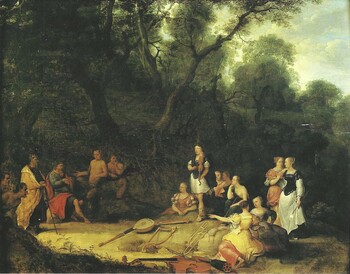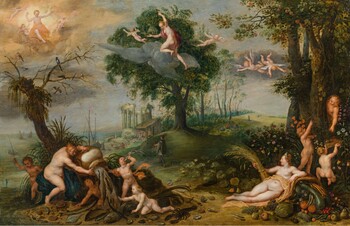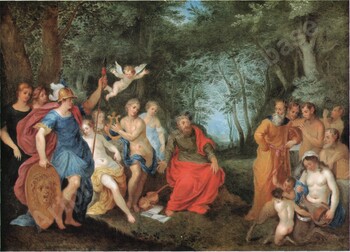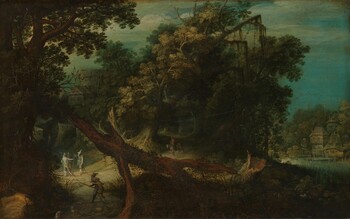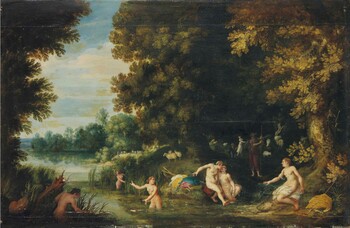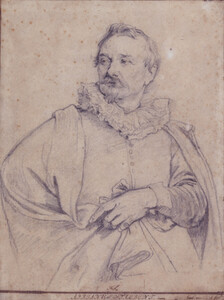Cornelis Schut after the engraving by Sir Anthonie van Dyck
Portrait of Adriaen van Stalbemt
Drawing on paper : 286 X 215 mm
Unsigned
Paris, Musée du Petit Palais
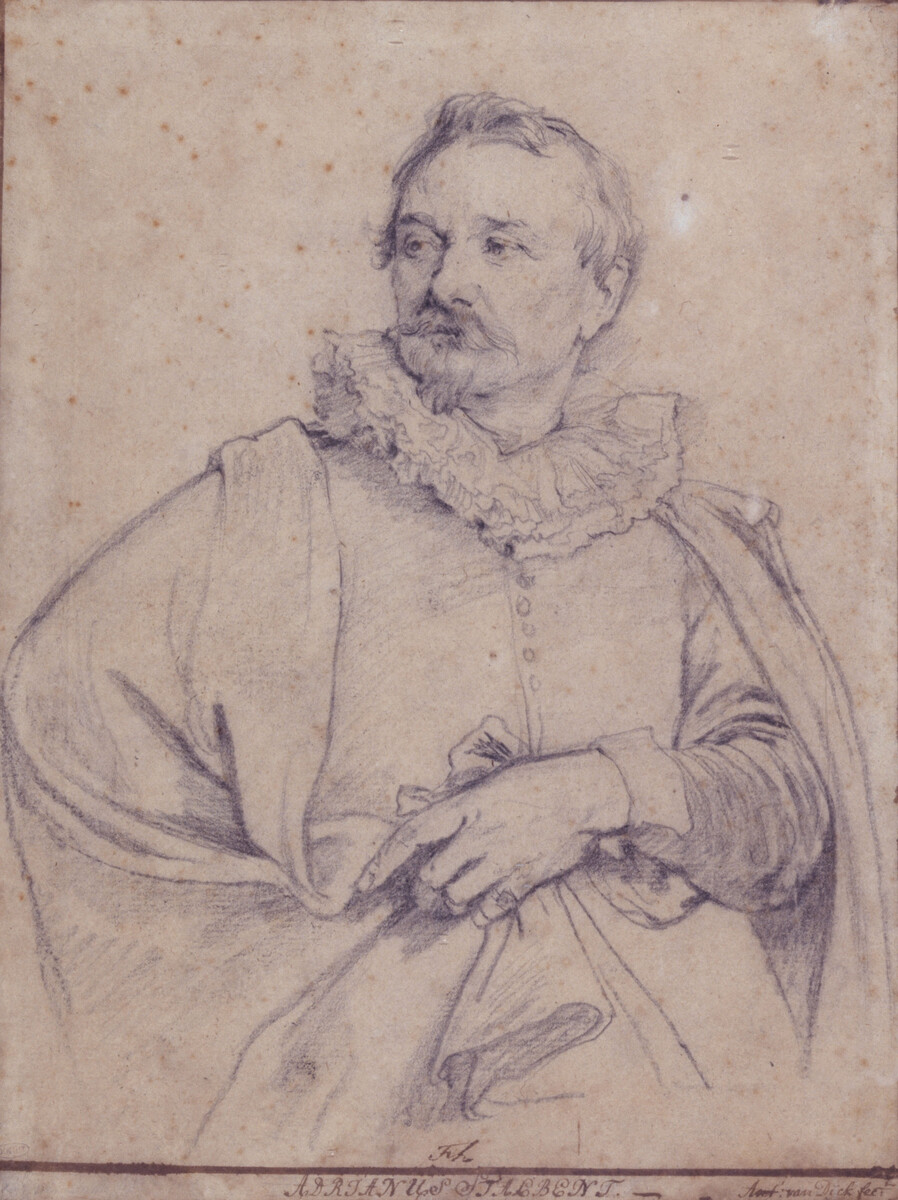
In short
Adriaen van Stalbemt was an important and versatile Baroque painter from Antwerp. He did not often sign his works.
The subject of our paintingis one of the most popular of 250 myths written down in the “Metamorphoses” by Ovid in Rome in the year 8 AD. Apollo, god of the sun and of music, was challenged to a musical contest by the minor, rural god of the woods, Pan. The umpire, Tmolus, declared Apollo the victor. But King Midas disagreed and Apollo punished him with donkey’s ears for his poor judgement.
About Adriaen van Stalbemt
Flemish painter
Antwerp 1580 – 1662 Antwerp
Painter of landscapes, history subjects (biblical and mythological), genre and allegorical scenes and gallery pictures.
Van Stalbemts parents fled in 1585 from Antwerp, following its re-conquest under Alessandro Farnese, because of the persecution of Protestants by the Spanish Catholics. They settled in the nearby (Dutch) province of Zeeland, in Middelburg. Our painter returned in 1609 to Antwerp, where he became Master in the Painter’s Guild of Saint Luke. In 1618 he was elected Dean. He was chiefly active in Antwerp. In 1633 he worked for seven months (some sources mention ten months) in London, at the request of King Charles I.
Van Stalbemt is known to have collaborated with several important painters, such as the brothers Jan I and Pieter II Brueghel, and with Frans Francken II.
His oeuvre shows great stylistic and thematic variety. He was open to the influence of very diverse painters, such as Jan Brueghel I, Gillis van Coninxloo II, Adam Elsheimer and Hendrick van Balen.
He was an excellent landscape painter, but also a good figure painter, known for his harmonious compositions filled with subtle details.
Usually van Stalbemt did not sign his works.
About the subject of our painting
Apollo, god of the sun and of music, poetry and prophecy, was audaciously challenged to a musical duel by the minor, rural god of the woods, Pan. Pan, half man – half goat, is sitting at the left of our composition; he is playing his flute. The umpire, the old mountain god Tmolus, declares at the centre of our painting Apollo, who is holding his lyra, the victor.
But King Midas of Phrygia, standing between Pan and Tmolus, disagrees with this decision and says that Pan should be declared the winner. Apollo turns Midas’s ears into those of a donkey, as a sign of his foolishness.
The solid figures in our painting seem to perform a Classical theatre play, set in a clearing in the middle of a densely wooded, Abraham Govaerts-like forest. The nymph right of Apollo is magnificent, showing her Rubensian or Jordaenesque “derrrière”. Similar nymphs can be found in a great painting offered for sale at Im Kinsky, 24/04/,18, that represents an Allegory of the Four Elements. The quality of the staffage in both our and in that painting surpasses by far the average Stalbemt production.
The myth of the musical contest between Apollo and Pan was written down in the “Metamorphoses” by the famous Roman poet Ovid (Publius Ovidius Naso, 43 BC – 18 AD), a compilation of 250 Classical Greek myths written in Latin verses. These were translated in Dutch and published in 1604 by Karel van Mander (1548 – 1606), a Flemish-born Dutch painter, writer and art theoretician. This translation was part of van Mander’s famous “Book of Painting” (“Schilder-Boeck”). That book was a compilation of three books: a translation of the “Lives” of Vasari, a similar collection of lives of Dutch, Flemish and German painters, and finally a translation of The Metamorphoses, that was followed by a guide explaining the figures. Van Mander died already two years after the publication of his “Schilder-Boeck”, which became very influential. In 1618 a second edition was published. His version of the Metamorphoses became so popular that it was sold as a separate book.
Why should you buy this painting?
Because every collector of Flemish Old Masters deserves to have this magnificent mythological scene in his or her collection.

